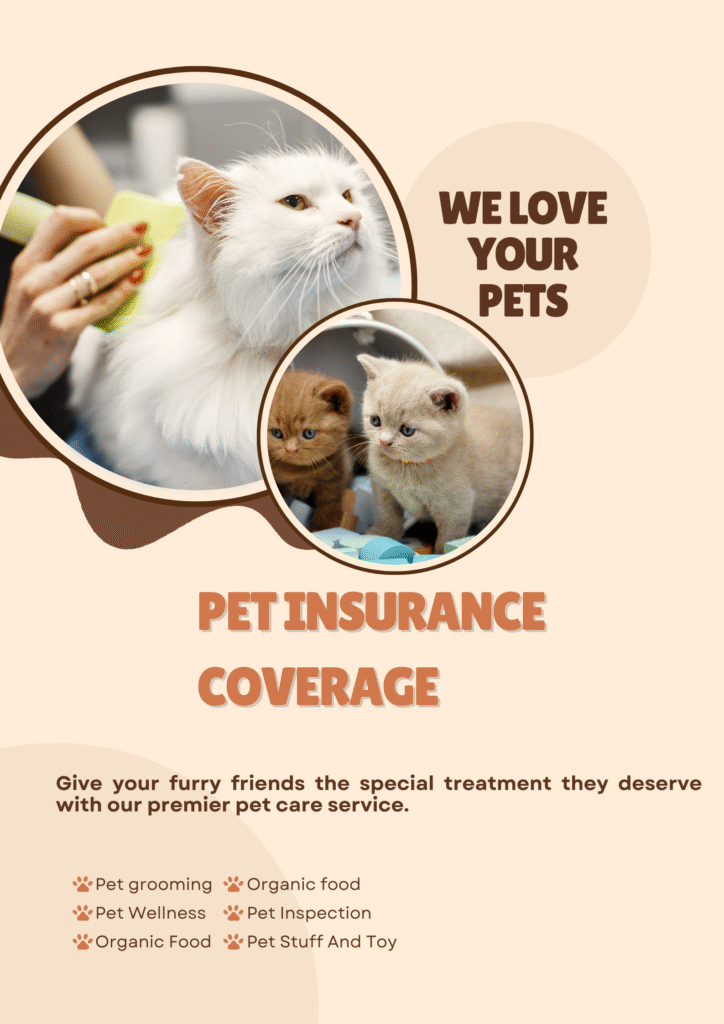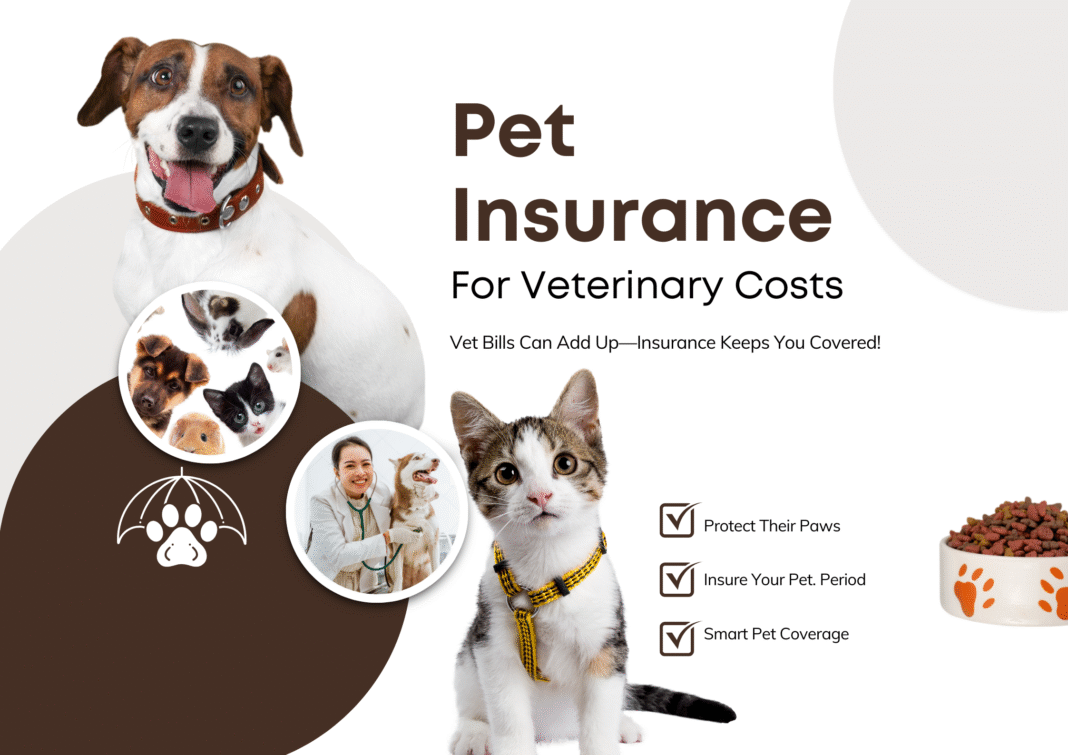Pets provide joy, comfort, and measurable health advantages. You already know that your four-legged pal helps you, but now there’s proof to back it up!
Pets contribute value to our lives in many ways, but the economic implications of pet care are often overlooked. The vet bills might be rather costly, and a lot of families fear they cannot cover sudden expenses. In fact, 55 percent of pet owners have considered euthanizing their pet due to bills in excess of $2,500.
Pet insurance helps to avoid this as it makes veterinary care more affordable and provides people with peace of mind. As there are numerous insurance agencies and plans, it may be difficult to decide what is the best one suitable to your dog. Continue reading to find out how pet insurance works, what it covers, what are the costs, and how to select the appropriate coverage plan to cover your pet.
What is Pet Insurance?
Pet insurance is designed to help cover unexpected vet bills when your dog has an accident or illness. Here’s how it works. According to the North American Pet Health Insurance association, there has been an increase of 12.7 percent in the number of pets insured in 2024 as compared to 2023, which maintains the affordable care of pets, their routine and pet preventive care. Pet insurance covers a percentage of veterinary costs related to your pet’s illness or injury, depending on the type of insurance chosen, and requires you to pay a monthly payment.
A majority of insurers accept only cats and dogs and some insurers limit enrollment by breed and age. Under pet insurance, a pet owner can usually bring his pet to any licensed veterinary or clinic.
How Pet Insurance Works?
Pet insurance will assist you in paying the veterinary bill in case your pet becomes ill or injured. You have the freedom to go to any licensed vet practice including specialty and emergency clinics. The majority of plans are reimbursement-based. You pay the bill and send a claim to your insurance company. Other insurance companies reimburse the vet. Your coverage is determined by three primary factors: the deductible, the reimbursement rate, and the yearly coverage limit. These have an effect on what you pay directly and what the insurance company pays. The procedure itself is very simple: you receive treatment, pay the bill, send your claim with receipts, and are compensated in case it is accepted.
Pet Insurance Coverage
Pet health insurance will cover your pet based on the plan you select, which can be accident-only, accident-and-illness, or an optional wellness plan that covers routine care. The majority of insurers exclude pre-existing conditions, so you should start your policy before your pet develops any health issues.

Insurance Coverage Overview
• Accidents: These provide covers to unforeseen woundings such as cuts, bite injuries, fracture, poisoning, and road accidents.
• Illnesses: Covers minor and severe health illnesses such as allergies, diabetes, asthma, urinary tract infections, and cancer.
• Hereditary / Congenital Conditions: Includes inherited problems at the time of coverage in case the symptoms did not exist before the initiation of coverage.
• More Feasible Coverage Details: Covers hospital stay, surgery, prescription drugs, dental injury, behavior therapy, alternative medicine.
• Wellness & Routine Care (optional): contains a yearly physical, dog dental cleaning, blood testing and physical, and spay or neuter.
How much does pet insurance cost
In 2024, the average monthly premium for an accident-and-illness plan for dogs was $62.44 and $32.21 for cats. The cost depends on factors such as coverage type, location, species and breed, size and age, deductible, and reimbursement and coverage limit. Accident-only coverage is cheaper, while adding illness or wellness coverage costs more. Higher vet costs in cities result in higher premiums. Larger or older pets are more expensive to insure.
Benefits of buying Pet Insurance
Here are a few of the top benefits pet insurance can provide.
Saves Money In the Long Term: Covers most of the vet expenses above a minimal deductible, reducing the increasing cost of veterinary care.
Peace of Mind: Allows you to select the best care without having to worry about how affordable it is since it usually covers up to 80 percent of the expenses in most cases.
Concentrate on Treatment, Not the Price: Allows the individual to receive treatment either in surgery or cancer therapy without delay due to financial constraints.
Service with Freedom to Choose Your Vet: Select an area veterinarian and use any licensed veterinarian, then send your bill to us and we will reimburse you.
Covering all breeds and all ages: You can cover pets of any age, but it tends to be cheaper the sooner you insure them.
Additional protections: There are theft coverages, travel coverages and a third-party liability coverage that covers damage or injury by a pet.
Best Pet Insurance Companies
We studied the top pet insurance providers by comparing key coverage categories across leading plans and analyzing multiple pet insurance prices to find what truly matters for pet owners.
Best Overall: ASPCA
Best Budget Option: Pets Best
Best for Short Accident Waiting Period: MetLife
Best for Multiple Pets: Spot
Best for Unlimited Annual Coverage: Embrace
Best for Senior Pets: Pumpkin
Best for Wellness Coverage: Fetch
Best for Fast Claims Processing: Healthy Paws
Best for Add-On Coverage: Figo
Best for Vet Direct Pay: Trupanion
Tips to choose the best pet insurance policy
- Some of the factors that should be considered when comparing pet insurance policies include cost, coverage, exclusions, custom or tailor made coverage, waiting periods and the reputation of the insurer.
- Take the quotes offered by various insurance companies and compare the best value on money.
- Select an accident and illness or accident-only insurance cover, and read policy provisions to learn specific expenses covered.
- Review the list of exclusions to understand the situations when claims are not paid.
- Customize your coverage as per your budget and your dog as per coverage limits, rates of reimbursement and deductible amounts. Waiting periods also occur, typically 48 to 72 hours in the case of accidents and 14 days in case of illness.
- Conduct a research to identify the insurance brand, underwriter, business history and customer reviews to get the best cover of your dog.
The American Veterinary Medical Association (AVMA) states it “endorses the concept of pet health insurance that provides coverage to help defray the cost of veterinary care and encourages veterinary teams to proactively educate clients about the existence of these resources.” So, start your pet insurance quote now to help prepare for those unexpected costs!
FAQs
What does pet insurance cover you for?
It generally pays veterinary expenses on accidental, disease, congenital issues, even normal care in some policies. Coverage plans differ with insurers and types of coverage.
Is pet insurance mandatory in the USA?
No, pet insurance in the USA is not a must by the law but it is optional.
What does it mean if a pet is insured?
It implies that the owner holds a policy, which assists in covering veterinary expenses and limiting out-of-pocket expenses.
How does pet insurance work in the USA?
You pay the vet, file a claim and are reimbursed after you meet your deductible on covered costs.
How much does pet insurance cost in the USA?
Accident-and-illness coverage had a mean of 62.44/month in 2024 per month and 32.21/month per month of dogs and cats, respectively (NAPHIA).
Is pet insurance worth it in the USA?
Yes, to a lot of owners, it can save thousands of dollars in case of emergency or when one is sick, and also more affordable treatments are a possibility.
What is the American pet policy?
There is no unified USA national pet policy; terms and coverage vary by insurer and plan.
What doesn’t pet insurance cover?
Majority of the plans do not cover pre-existing conditions, elective operations, the cost of breeding and other non vet issues.




